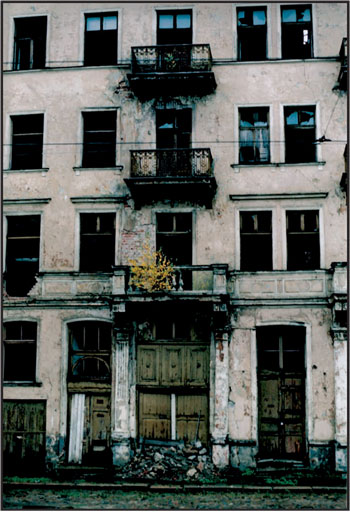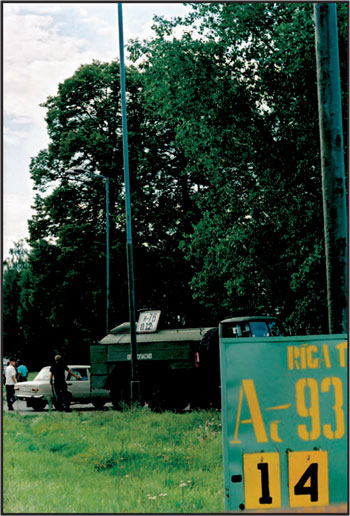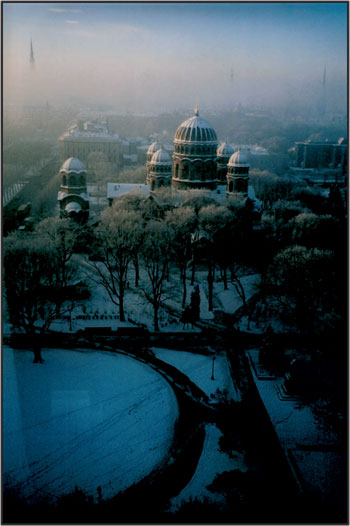Being a doctor in Latvia in the transition period
Around me the world changed. Not from day to day, but at least from month to month. In 1993 the old currency unit the Lat had been reintroduced on Latvian soil as an undisputed proof that times were new. Every time you had to recalculate a price from the familiar but steadily inflated transitional currency Latvian roubles to the precious new bills and coins where even the smallest centime carried a respectable value, you were reminded that you by now belonged to an independent country. Other changes also added to the self-confidence – details such as getting an independent country code for the telephone: +371!
Goods to be bought filled up the shelves of the stores. Foreign shopping chains established warehouses with tempting merchandise. But even for me, a grown-up doctor, there was serious disharmony in the picture of a free nation growing into prosperity: My salary was as low as it had been before, and in no way did it match the new prices. Only imaginative and creative business people could dream of entering the new upmarket car shops and order a vehicle. Even having a cup of coffee in the lobby of the Pardaugava sited Radisson SAS Hotel was in a price range that clearly demonstrated the presence of a capitalist world, far from that of the modest Intourist travellers you could meet in the same house before. Would Latvia become a country for Latvians? At least for the publicly employed, salaried majority like myself?
However, when returning from Dallas, Texas in 1993, I was filled with optimism. The professional and social status of the American doctors had impressed me, and so had the efficiency and the vivacity I experienced in the hospital wards. It was quite clear to me that even small, yet important changes could be undertaken in my Riga workplace, the Red Cross Hospital, also without additional costs. Introducing new routines could add substantially to the outcome of our work. Filled with enthusiasm I addressed my hospital boss, told him about my US experiences, and was eager to implement what I had learnt on the study trip – after all, it was a venture that he had initiated.
His reaction was surprising. Calm down, he said and meant it. And hospital life and hospital practice continued as usual. The fact that some of the staff had been to the United States had now become part of the quality assets held and hailed by the hospital. However, still, time was not ripe for making major changes. Needless to say, I felt a little bit disappointed, but when looking back I understand the situation better.

Waiting for capitalism (1996): Colourful decay in the January 13 Street of Riga.
Months went by. Then something happened again. The country of Latvia had been invited to send participants to a nine weeks’ course on maintenance of new medical equipment in India. For some reason, which still remains unclear to me, I was proposed as one of the representatives. Well, I thought, with, for the time being, a rather dull work and a lousy salary, I had little to lose, and I accepted. Upon arriving in India, it became apparent to me that the course was not intended for doctors but for medical equipment technicians, a fact which caused me some unexpected trouble, but anyhow, I enjoyed the encounter with India.
This 1994 visit to India was a complete culture shock to me, equalling what I had experienced in the United States. The crowds, the poverty, all the diseases which could hardly be treated, the health and living conditions begging for even any modest increase, contrasted with the incredibly rich minority.
The health services and the social conditions I saw in India, in a way, balanced my impressions from the United States. I became convinced that in the case of Latvia, what should be aimed at was something in between. But how? I would not describe myself as being depressed at that time, more as resigned when I came home to my work in Riga.
To clear my mind from the hospital disappointments, I started to follow evening classes in French for one and a half years. It did not relieve my feelings towards the hospital, but it improved my French.
One day a colleague in the hospital told me that he also felt frustrated with the way we were working. Medicine was obviously developing away from the hospital-based Soviet style health care, and also had to do so, partly because of the increasing manpower cost and running expenses in the new marketoriented economy situation. But for us, only little had changed. Much had been written and much had been said about health care reforms, but on the base level only faint adjustments had occurred. Many reforms did not pass through because of lobbying and obstruction from the side of the hospitals, and many given orders were not implemented for the same reason.
I made up my mind. It was time for change.
Around 1994 private clinics were set up in order to take care of patients who were member of the then recently founded new sickness funds. One of these enterprises was the clinic «Linezers», a hospital compound in the outskirts of Riga, discreetly placed in a pleasant surrounding park. In Soviet times this had been a clinic for the higher ranks of the communist party nomenklatura. By now it also served the higher ranks of society, ranks which were defined by their ability to afford the extras which were not covered by their sickness insurance. I was offered the position as head of the policlinic department. I accepted, and so started my out-patient, primary health care professional activity.

Gasoline distribution in Riga 1993.
The «Linezers» way of medical work resembled health care what I had seen in the United States. Advanced equipment was at our disposal and the professional level was good. During my time at «Linezers» the idea of teaching medical students who were sent from the University of Oslo came up, and I think that what we showed them of our practice met the expectations held by the students and by the University of Oslo as well.
However, when my three years contract was approaching its end, I shifted to practicing primary health care in another setting: The Riga municipality authorities had been alarmed by the situation of primary health care. On their initiative, they suggested establishing a primary health care service, partly funded from the municipality, partly from sickness funds, and partly by fee-forservice payment from the patient. Together with some colleagues I took hold of the idea and after a somewhat cumbersome administrative process we were able to open a group practice in the Baznicas street of central Riga.
In the 1990s, times were hard in the health services as well, and unemployment among doctors did occur. The idea of running a high-end private health service like in «Linezers» based on sickness fund and insurance company remuneration seemed to have inherent risks. Some insurance companies and even one major sickness fund simply went bankrupt. Such events eroded much of the rationale for running a clinic or a practice. In addition, over Latvia, job insecurity had become part of everyday life for almost everyone in society. This hurt especially hard for cultural reasons, because job insecurity did not exist at all in the Soviet Union. Everyone was not only entitled to work, but also expected to do so in service of the society. Job insecurity was something new to the Latvians, causing a new type of stress for all.
But the group practice in Baznicas Street slowly grew and found its place. There were numerous problems to encounter. Some of them were medically related, others were administrative, as Soviet medicine did not include primary health care based on general practitioners.

Dawn in Riga (2002).
